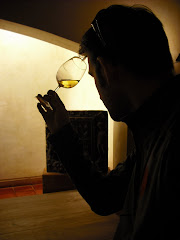First, we start with the newly picked grapes (but also be aware that it takes an entire year of work, a great deal of patience, and luck from mother nature to get a mature grapevine to produce quality grapes). In a production facility the grapes are lightly broken apart to let the sugary juice drain out. The whole mash is placed into large open vats. For those that like white wine, the juice almost never sees the skins of the grapes again and is pressed out and saved. For red wine, the juice will bathe in the skins from a few days to even a month depending on how much of the red colour needs to be extracted from the skins.
When the grapes have been broken apart the juice is exposed to the most important player, the yeast. These little critters are met with a foray of sugars to eat. They mingle, have a great big party, and over one to two weeks will turn the majority of that sugar into alcohol – what we know as fermentation. As they do this, they produce the carbon dioxide that gives the characteristic fizz and foam that helps to preserve the newly made wine. This “primary” fermentation lasts for about a week and converts almost all the sugar into alcohol. It is also at this point that red wines are pressed from the skins.
By the time the stage is complete most of the yeast have died off (when they party way too hard and have nothing left to eat they succumb to the alcohol) and sink to the bottom of the vat. The new wine is siphoned off and then placed into a new vessel with a special one way valve to lock off the air and prevent spoiling. There are still a few yeast partygoers that manage to stick it out and stay for an afterparty. This “secondary” stage of fermentation allows these yeasts to ferment the rest of the sugar and the process can go on for weeks. In more advanced techniques, the “secondary” fermentation actually refers to a stage where special bacteria are added to the wine. Rather than make ethanol, these bacteria convert a certain type of acid in the wine that tastes very ‘tart’ into an acid that we perceive as ‘smooth and round’.
When all the fermenting is complete, the wine can be left in a cooler environment to clear itself of the rest of any suspended sediment. After, the wine can be either filtered and bottled right away, or left to “age” in an oak barrel or other container for months to years before bottling.
Now the winemaking is complete, you can uncork the bottle and enjoy – just try not to finish it all in five minutes.
One of the key components of this blog will be to describe in further detail how great wine is made. The amazing thing about this process is that there are so many variables that will affect overall quality of the wine, and each represents a stage in which you can 'customize' the wine to reflect your personal tastes.


